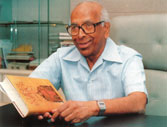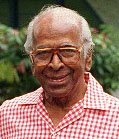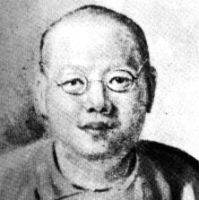S. Rajaratnam
 S. Rajaratnam
S. RajaratnamBorn: 1915
Birth Place: Jaffna, Ceylon (now Sri Lanka)
Died in: 2006
Age: 91
Achievement: "One united people, regardless of race, language or religion."
S. Rajaratnam was born in 1915 in Jaffna and was grow-up in Seremban, Malaysia, where his father rose from being a supervisor of rubber estates to a plantation owner. He attended the Convent of the Holy Infant Jesus for six months and was transferred to St Paul's, a boys' school. He continued his education in the prestigious Victoria Institution in Kuala Lumpur and then in Raffles Institution in Singapore.
In 1937, he went to King's College in London, to pursue a Law degree. There he received his political awakening, became fashionably anti-imperial, anti-British, joined the socialist Left Book Club and became a Marxist.
Due to the seriously lack of communication between London and Malaya during the Second World War, meant that Rajaratnam could no longer received money from his father to continue his education. He therefore turned to journalism to earn a living, never completing his degree.
On his returned to Singapore in year 1948, he joined the Malayan Tribune. In 1950, he was appointed as an Associate Editor of the Singapore Standard and held that post for four years. After then, he worked for The Straits Times till year 1959.
Soon later, Rajaratnam met Lee Kuan Yew by chance at the Chinese Swimming Club. Recognising that they were both dissatisfied with the prevailing political situation, they arranged to meet to discuss the situation. Rajaratnam became a founding member of the People's Action Party (PAP). In 1959, he resigned his post from The Straits Times to run the Legislative Assembly seat of Kampong Glam.
S. Rajaratnam is recognised and recognises himself as the theoretician and ideologue of the People's Action Party. In his own words, "the ideas man," "a public relations man who projects the PAP image."
He is also known as a strong believer in multi-racial Singapore. In 1966, with the 1964 race riots fresh in his memory, he wrote the National Pledge containing the words of "One united people, regardless of race, language or religion."
He also wrote 'PAP's first ten years', published in the 1964 souvenir publication marking the party's tenth anniversary. This account, the first by a minister and founding party member, has become a classic reference for subsequent accounts of Singapore's history of independence.
In the Cabinet, Rajaratnam served as Minister for Culture (1959), Minister for Foreign Affairs (1965), Minister of Labour (1968-71) and second Deputy Prime Minister (1973). He was appointed Senior Minister in 1988 after he retired from active politics.
And in year 2006, Rajaratnam passed away with an age of 91.









